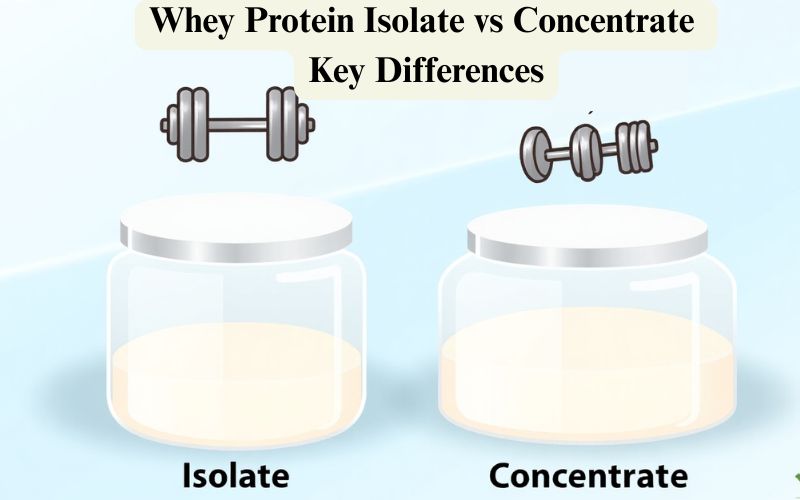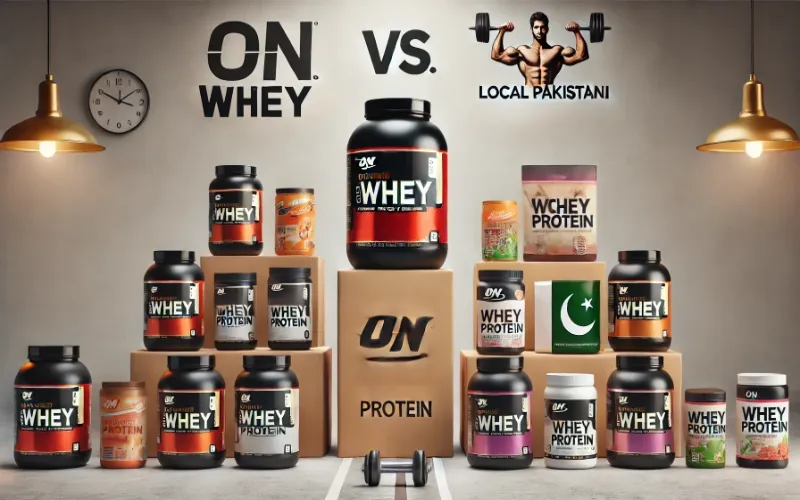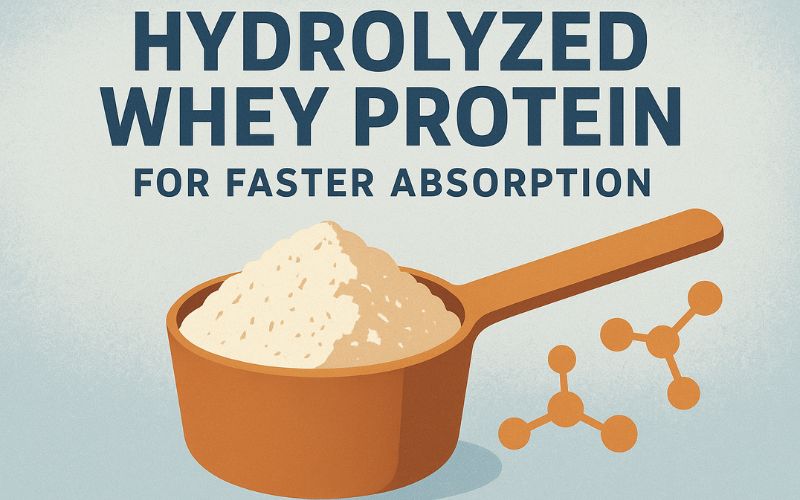Whey protein has become a staple in the fitness and wellness industry, serving as a convenient source of high-quality protein for athletes, bodybuilders, and health enthusiasts alike. As the demand for protein supplements continues to surge, the market offers an extensive array of options, with flavored and unflavored whey protein standing as two primary choices for consumers.
Table of Contents
What is Whey Protein?
Whey protein, a byproduct of cheese production, is renowned for its rich amino acid profile, which is essential for muscle repair and growth. It is available in various forms, including concentrate, isolate, and hydrolysate, each offering distinct benefits. This complete protein is easily digestible and efficiently absorbed by the body, making it a favored option for those seeking to enhance their protein intake. When comparing Whey Protein Isolate vs Concentrate, Isolate provides higher protein purity with lower fat and lactose, while Concentrate offers a more balanced nutrient profile, making it a versatile choice for overall nutrition.
Whey protein has surged in popularity, becoming a cornerstone in the dietary regimen of fitness enthusiasts, athletes, and health-conscious individuals. This high-quality protein source is lauded for its ability to support muscle growth, recovery, and overall health.
The Rise of Flavored Whey Protein
The modern fitness landscape has witnessed the meteoric rise of flavored whey protein, a trend driven by the desire to make protein consumption both enjoyable and convenient. In an industry where taste often dictates preference, flavored whey has managed to transform the once utilitarian task of protein supplementation into a daily indulgence.
With flavors that cater to a wide range of palates, from the comforting classic chocolate and vanilla to the more sophisticated and adventurous salted caramel and mocha, these proteins offer a sensory experience that goes beyond mere nutrition.
Does Flavored Whey Protein Taste Good?
The answer resounds yes. Manufacturers have invested heavily in flavor development, aiming to create products that not only meet nutritional needs but also satisfy cravings. These indulgent flavors often mimic the taste of popular desserts, making it easier for individuals to adhere to their protein intake goals without feeling like they are making a sacrifice.
For many, the convenience of mixing a scoop of flavored whey with water or milk and enjoying a drink that tastes like a treat is a significant advantage. Moreover, the appeal of flavored whey extends beyond taste; it’s also about the convenience it brings. The ability to enjoy a protein shake that’s quick to prepare and enjoyable to drink is a major selling point for those with busy lifestyles.
Whether consumed post-workout or as a meal replacement, flavored whey fits seamlessly into a variety of daily routines, providing a palatable and nutrient-rich option that satisfies both hunger and taste buds.
Unflavored Whey Protein:
On the other side of the spectrum lies unflavored whey protein, which appeals to those who prioritize purity and minimalism in their supplementation. In an age where consumers are increasingly aware of what they put into their bodies, unflavored whey stands out as a product that offers transparency and simplicity.
Free from artificial sweeteners, flavors, or colors, unflavored whey is a clean label option that aligns with the ethos of natural and whole-food consumption.
Does Unflavored Whey Protein Taste Bad?

It’s important to understand that while unflavored whey lacks the sweetness and taste enhancements of its flavored counterparts, it does not necessarily taste bad. Its neutral flavor profile, though bland to some, is precisely what makes it so versatile.
This best unflavored whey protein is an ideal canvas for culinary creativity. It can be easily incorporated into a variety of dishes—smoothies, oatmeal, soups, or even baked goods—without overpowering the natural flavors of the food. For many, the lack of flavor is not a drawback but a feature that allows them to control the taste and nutritional content of their meals more precisely.
Ingredients in Flavored Whey Protein
When selecting flavored whey protein, understanding what’s inside the tub is crucial. Unlike its unflavored counterpart, flavored whey protein comes with a host of additional ingredients designed to make it taste good and look appealing.
These typically include artificial flavors, sweeteners like sucralose or acesulfame potassium, and sometimes food dyes. These ingredients, while enhancing the sensory experience of the product, can raise questions for the more health-conscious consumer.
Is It Better To Get Flavored Or Unflavored Protein Powder?
The answer largely depends on individual preferences and health goals.
- For some, the convenience and enjoyment derived from flavored whey outweigh any concerns about artificial ingredients.
- The taste and ease of use are significant factors, especially for those who might struggle to consume enough protein otherwise. However, for others, the presence of synthetic additives may be a deterrent, leading them to opt for unflavored whey, which offers a more natural and clean protein source.
- It’s also important to consider how these ingredients might affect the overall nutritional profile of the whey protein. For instance, the inclusion of sweeteners can impact the caloric content of the protein powder, potentially making flavored whey slightly more calorie-dense than its unflavored counterpart. This difference, although minor, could be a consideration for those focused on weight loss or calorie control.
The Case for Natural Flavors and Sweeteners
In an era where health-conscious consumers are increasingly scrutinizing their food choices, the demand for more natural alternatives in flavored whey protein has prompted brands to innovate.
- To meet this demand, manufacturers have begun to offer flavored whey proteins that are free from artificial additives and instead use natural flavors and sweeteners like stevia or monk fruit extract.
- These natural sweeteners provide a seemingly healthier option for those looking to avoid the potential risks associated with artificial ingredients. However, even these natural sweeteners are not without their complexities.
- While they may reduce the intake of synthetic substances, they can still alter the caloric content of the protein powder, sometimes adding hidden sugars or contributing to an unexpected calorie count.
Artificial Additives in Flavored Whey
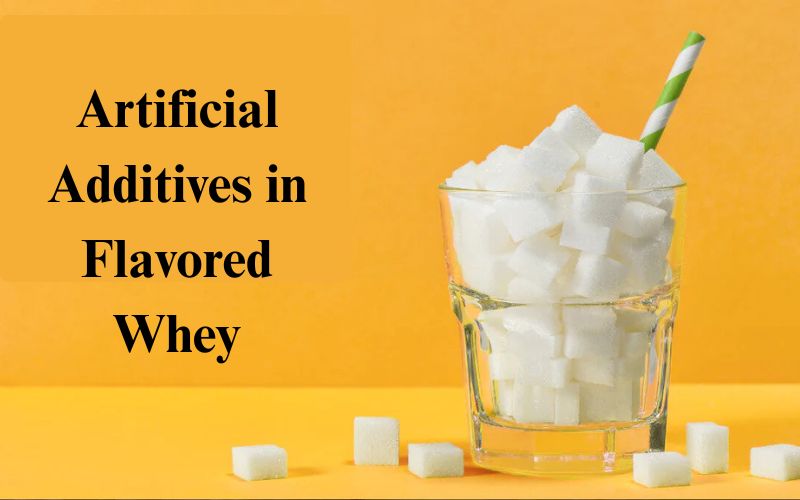
While artificial additives in flavored whey protein are generally recognized as safe by regulatory agencies, there remains a segment of the population that prefers to avoid them.
- Concerns about potential side effects, such as gastrointestinal distress, allergic reactions, and the cumulative impact of synthetic ingredients on long-term health, are common among health-conscious consumers.
- Moreover, the long-term implications of consuming artificial additives on a daily basis remain a subject of ongoing research, and this uncertainty can be unsettling for those prioritizing a clean and natural diet.
- As a result, there is growing interest in unflavored whey protein as a potentially safer, more health-conscious choice. This version of whey protein, free from artificial additives, offers a purer form of protein supplementation without the risks associated with synthetic ingredients.
- For those concerned about the cumulative effects of artificial additives, unflavored whey presents an alternative that aligns more closely with the principles of whole food nutrition.
It also provides peace of mind for consumers who are meticulous about what they consume, ensuring that their protein supplementation supports their overall health and well-being without introducing unnecessary chemicals into their bodies.
Impact on Digestive Health
Whey protein—flavored or unflavored—can affect digestion differently based on individual tolerance. Artificial sweeteners like sucralose and acesulfame potassium, commonly found in flavored protein powders, are known to cause bloating or GI distress in sensitive individuals. Conversely, unflavored whey, especially isolate, is often easier on the stomach due to its purity and lack of irritants.
Key Tip: Those with lactose intolerance or IBS may benefit more from unflavored isolate versions.
Flavor Fatigue: A Hidden Problem
While chocolate, vanilla, and cookies & cream are initially exciting, many users report “flavor fatigue” over time. Flavored whey can feel restrictive due to its strong, often sweet taste profile. In contrast, unflavored whey allows more flexibility—it can be flavored naturally using fruits, cocoa, or nut butters, reducing monotony.
Why it matters: Preventing taste boredom can improve long-term protein supplement adherence.
Environmental and Ethical Considerations
The production of flavored whey proteins often involves additional processing, artificial chemicals, and multilayered packaging, which may carry a larger environmental footprint. Unflavored whey, typically less processed and with fewer added ingredients, may align better with sustainability-focused consumers.
Bonus Insight: Some brands now offer grass-fed, cruelty-free, and eco-conscious whey options—mostly in unflavored or minimally flavored formats.
Expert Tips: How to Choose Based on Your Goal
Add a short segment featuring dietitians or trainers recommending the right option based on use case:
- Muscle Gain: Flavored whey post-workout for calorie surplus
- Weight Loss: Unflavored isolate for minimal calories and sugar
- Meal Replacement: Flavored for taste + satisfaction
Cooking & Baking: Unflavored only
The Versatility of Unflavored Whey
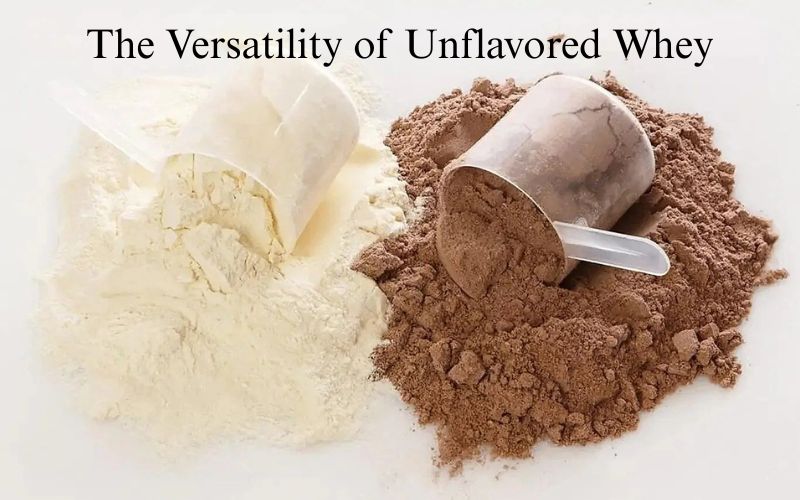
One of the most compelling advantages of unflavored protein powder is its incredible versatility. Unlike flavored whey, which is often constrained to specific uses due to its sweet taste profile, unflavored whey can be seamlessly integrated into a broad array of recipes, both sweet and savory.
In yogurt, unflavored whey blends smoothly, providing an extra protein punch without making it overly sweet. When mixed into pancake batter, it can fortify breakfast with additional protein, making the meal more satisfying and nutritious without changing the beloved taste of the pancakes. The versatility extends even further into savory dishes, where unflavored whey can be incorporated into soups, sauces, or even mashed potatoes to enhance their nutritional value without imparting any unwanted sweetness.
Can I Mix Flavored And Unflavored Whey Protein?
Absolutely. Mixing the two can create a more subtle flavor, reducing the intensity of the flavored whey while still enjoying its taste. This blend allows users to enjoy the benefits of both, crafting a personalized protein supplement experience that meets their taste and nutritional preferences. Whether for culinary creativity or straightforward supplementation, unflavored whey offers unparalleled flexibility, making it a staple for those who seek to optimize their diet with high-quality, unadulterated protein.
Nutritional Differences & Cost Considerations
Here is a table that summarizes the Nutritional Differences and Cost Considerations between flavored and unflavored whey protein
| Category | Flavored Whey Protein | Unflavored Whey Protein |
| Nutritional Content | – Core protein content remains largely unchanged.
– May contain additional sugars, fats, and carbohydrates. – Slightly higher caloric content due to added ingredients. |
– Pure protein content with minimal additives.
– Typically calorically purer with fewer added ingredients. |
| Caloric Impact | – Extra sugars and fats can lead to a slight increase in calories.
– Important for those focused on weight management or weight loss. |
– Lower calorie count per serving, making it ideal for calorie-conscious individuals. |
| Taste and Enjoyment | – Offers a wide range of flavors (e.g., chocolate, vanilla, salted caramel).
– Enhanced taste may improve adherence to dietary goals. |
– Neutral taste, allowing for versatility in recipes.
– May require added flavors if taste is a concern. |
| Cost | – Generally more expensive due to added ingredients and processing.
– Appeals to those who prioritize taste over cost. |
– More cost-effective, especially for those on a budget.
– No extra costs for flavoring or sweeteners. |
| Suitability for Diets | – Suitable for those who prefer a flavored protein supplement.
– May not align with certain dietary restrictions due to added ingredients. |
– Ideal for those who prefer minimalism in their supplements.
– Easier to fit into various dietary plans. |
| Usage Flexibility | – Limited to sweet applications; may not mix well with savory dishes. | – Extremely versatile; can be used in both sweet and savory dishes. |
| Long-Term Health Impact | – Presence of artificial additives and sweeteners may be a concern for some. | – Free from artificial additives, appealing to health-conscious consumers. |
This table helps to visually compare the key differences between flavored and unflavored whey protein in terms of nutritional impact, cost, taste, and overall suitability for various dietary and lifestyle needs.
Conclusion
The decision between flavored and unflavored whey protein is multifaceted, involving considerations of taste, health, nutrition, cost, and environmental impact. By understanding the differences and weighing the pros and cons, consumers can make an informed choice that aligns with their dietary goals and personal values. Whether opting for the indulgence of flavored whey or the purity of unflavored whey, the key is to select a product that supports your journey towards optimal health and wellness.


















